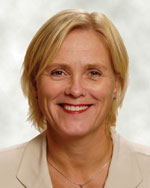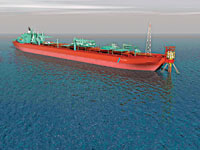 |
Norway |
|
Minister says governmental initiatives are affecting Norway positively
Thorhild Widvey is Minister of Petroleum and Energy in the Norwegian government, based in Oslo. Her principal responsibility is to achieve a coordinated and integrated energy policy. Another objective is to ensure high value creation through efficient, environmentally friendly management of Norway’s energy resources.
 |
Norwegian Minister
of Petroleum
and Energy
Thorhild Widvey
|
|
Question: What is the Norwegian government’s role regarding E&P?
Answer: The government’s main policy aims are value creation, sustainable development, and to further develop competence in the Norwegian petroleum cluster.
The Norwegian state’s primary role is to ensure efficient framework conditions for oil and gas activity in the areas of resource management, state revenues, environmental protection, and health, working environment and safety. In addition, Norway has an important position through its ownership of the State’s Direct Financial Interest in offshore tracts, and shares in Statoil and Hydro. Through taxes, dividends and the state’s direct participation, the government receives around 25% of its total revenues from petroleum.
Officials actively pursue policies to maintain the competitiveness of the Norwegian Continental Shelf (NCS), and to strike the right balance between attracting leading companies and optimizing state revenues. This requires ensuring that we continue attracting new companies, and that there are enough NCS opportunities for a diverse field of companies, both in frontier areas and more established sectors.
Q: What kind of year was 2004 for Norwegian E&P companies?
A: In most ways, 2004 was an excellent year for E&P activity on the NCS. Total production of oil and gas was higher than the year before. Liquid output decreased, but this was more than compensated for by a 5% increase in gas output. Investments were high – more than NOK 70 billion ($11.5 billion), including exploration. In addition, there is a significant market for goods and services connected to operations and maintenance on existing fields.
A number of new companies established themselves in Norway last year. This is a much appreciated effect of the policy of opening up and marketing the NCS to new companies.
Increasing exploration activity to generate new discoveries is one of our main priorities. So, it was worrisome that the number of exploration wells remained at a low level last year with only nine wildcats and eight appraisal wells drilled. I’m happy to say that the latest forecasts indicate a high exploration level in 2005 and the coming years. The Norwegian Petroleum Directorate has estimated that as many as 30 to 40 exploration wells may be spudded this year. Drilling rig availability could, however, be a limiting factor. This is a different picture than we expected a year ago.
Q: What activity level do you expect for 2005?
A: In 2005, investments will reach NOK 90 billion ($14.8 billion), a record level. Gas output will continue to increase, while liquids will remain at about the same level as last year. Increased exploration acreage is available, and more companies are present than ever before. When you combine these factors with high oil prices, then 2005 will be an interesting year for Norway’s petroleum industry. We see renewed interest in exploration, in both frontier and mature areas.
Q: What are the effects of high oil and gas prices on Norwegian firms?
A: One can say that 2004 was a particularly eventful year, with oil prices at very high levels. Demand growth stretched the world’s oil infrastructure to unexpected extremes. The result of this demand growth is a need for sustained, high levels of investment in infrastructure, and new oil and gas production. Partly in response to increased prices, the industry has begun to increase spending. The Norwegian supply industry will benefit from this.
Q: Is the government doing enough to encourage E&P activity?
A: Our government has seen the need to encourage exploration activity in light of results of recent years. We have introduced policies to encourage new oil companies to come to the NCS. Since 2000, several new companies have been established in Norway.
Over the last couple of years, we have made important changes to the way we award licenses. This includes introducing annual licensing rounds on a fixed time schedule in mature areas, with stricter work programs and tighter area management, both in relation to awards and relinquishments. In frontier areas last year, we completed a very comprehensive 18th Licensing Round, and we are preparing to announce the 19th Round this summer, with a focus on the Barents Sea. I think we are beginning to see some results from these initiatives, with a sharp increase in the industry’s plans for drilling new exploration wells this year.
There are significant remaining resources in mature fields. Furthermore, it is assumed that about half of the un-discovered NCS resources are in mature areas. Additionally, the infrastructure in mature fields has a limited lifetime. Consequently, if actions are not taken to reduce operating costs, increase the recovery factor and produce additional resources in nearby fields, major values will remain in the ground, and jobs will be lost.
The NCS cost level is very high. This contributes to too-low exploration activity and insufficient efforts for increased recovery. Costs must be reduced to make projects more profitable. Main responsibility for this demanding task rests with various parties of the industry. I have challenged the industry to maintain focus on this issue – also as relates to high oil prices. On the governmental side, we are evaluating our regulations to make sure they contribute to cost-effective operations.
Research and development is essential to reduce upstream costs, as well as to increase the recovery rate. Over the last few years, my government has made significant increases in petroleum research funding. The government also supports internationalization of the Norwegian oil industry to assist service/ supply firms in gaining access to overseas markets. We have also recently amended the fiscal system to encourage exploration, development and tail-end production.
Q: What are some major field projects involving Norwegian firms?
A: Norwegian firms have more than 35 years of experience with technology development and project management for offshore projects with demanding geology and harsh climatic conditions. The NCS has been a testing ground for technology related to floating production, subsea systems and drilling, among some key areas.
The Snøhvit LNG development and the Ormen Lange project are two excellent examples of front-end technology. Snøhvit field in the Barents Sea is under development, operated by Statoil. This is Norway’s first field development based on an LNG solution, and it is the northernmost LNG project in the world. This project makes it possible to ship gas to the US market. Snøhvit’s gas reserves will allow production for more than 20 years. The development of Snøhvit will provide a basis for further field projects in the Barents Sea.
Ormen Lange field is Norway’s second largest gas field, discovered by Hydro in 1997. Hydro’s subsea solutions at Ormen Lange are taking deepwater development a significant step ahead. Nothing will be visible on the surface, when the enormous field goes onstream in 2007. When it reaches full production, the field will meet 20% of UK gas demand.
Norwegian suppliers and service companies have demonstrated their competitiveness in international markets in recent years and have succeeded in winning a number of major international contracts. One of last year’s major successes is the Aker Kvaerner contract for fabrication, outfitting and testing of seven barges for oil production in giant Kashagan oilfield in the north Caspian Sea, offshore Kazakhstan.
 |
Future operation of the Berge Helene FPSO is just one example of successful Norwegian business outside the country.
|
|
Another success was the contract signed between Bergesen Offshore Group and Australia’s Woodside Petroleum for operating the Berge Helene FPSO at Chinguetti field, offshore Mauritania. About 60% to 70% of the project budget will be spent in Norway, and a large number of Norwegian companies are involved. This is the first development offshore Mauritania, in 750 m (2,461 ft) of water. Among the Norwegian firms involved are Vetco Aibel, APL, Framo Engineering, FMC Kongsberg Subsea, ABB and Smedvig.
Q: In what technical sectors are Norwegian firms excelling?
A: Norwegian suppliers and service companies have demonstrated their competitiveness in international markets during recent years. One example is the subsea sector. The Norwegian-based subsea industry occupies a leading position internationally, with close to 80% of market share. Their skills, experience and technology are continuously expanding through involvement in complex projects, such as Snøhvit and Ormen Lange fields. The Norwegian subsea cluster continues to win major contracts in the UK, West Africa, the Gulf of Mexico and Australia.
Q: What are your thoughts about the aggressive expansion of Chinese companies outside China?
A: China and Chinese companies are becoming more active internationally. This is an interesting development, which could also mean new market opportunities for the Norwegian industry. Chinese firms are potential partners for our service/ supply industry, as well as for Norwegian oil companies.
Q: How do you assess OPEC’s output and pricing actions?
A: Due to high demand growth in 2004, and lack of spare production capacity, market prices rose to a very high level in 2004. I understand that OPEC is building production capacity with an aim toward stabilizing prices.
Q: Toward which regions are operator interest and money moving?
A: Norwegian companies are involved in projects ranging from Arctic conditions at Sakhalin Island, the North Caspian and the Barents Sea, to deep water in West Africa, Brazil and the Gulf of Mexico. During the last year, Norwegian firms have consolidated their market positions in many of the most exciting provinces. The international activities of the two Norwegian oil companies, Statoil and Hydro, are growing. Their participation in Angola has been a success. Statoil is also developing the South Pars 6-8 field in Iran, where several Norwegian contractors and service companies are involved. Other countries where Norwegian firms have significant interests include Azerbaijan, Libya, Algeria, and Venezuela. 
Thorhild Widvey is Norway’s Minister of Petroleum and Energy in Oslo. She attended the College of Physical Education in Arhus, Denmark, through 1976 and then held a variety of sports coordination and marketing positions until 1989. During the 1976-1989 period, she was also a member of the Karmøy Municipal and Rogaland County Executive Boards, as well as a deputy member of Parliament. From 1989 to 1997, Minister Widvey was a member of Parliament for Rogaland and also served on several parliamentary committees. In June 2002, she was appointed State Secretary, Ministry of Fisheries, and in January 2003 was appointed State Secretary, Ministry of Foreign Affairs. She was named to her current position in June 2004.
|





